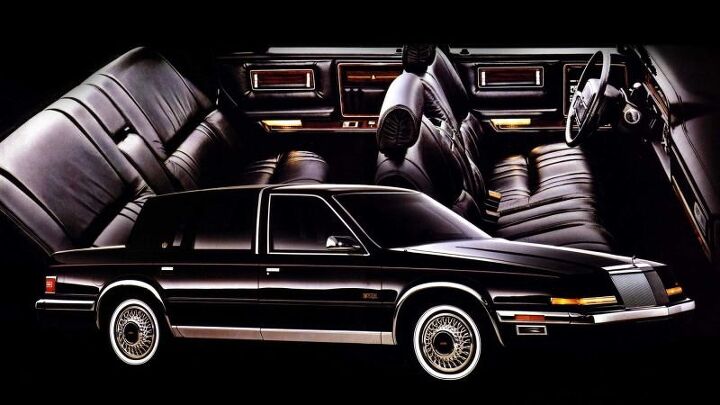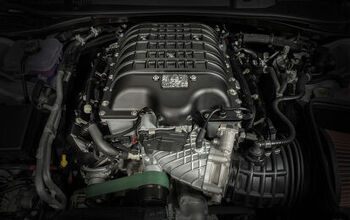Rare Rides: The Superbly Luxurious and Gingerbready 1990 Chrysler Imperial

I’ve been meaning to cover the final Chrysler Imperial for some time now. The only Imperial featured in this series so far is a collection of the early Eighties version, which was a very expensive and complicated pet project failure of Lee Iacocca.
Today’s Imperial is the follow-up model to that boxy rear-drive PLC. Let’s check out the longest and most luxurious K-car variant ever made.
Imperial was a special name at Chrysler, the company’s flagship when it entered production in 1926. The nameplate was conceived by Mr. Walter P. Chrysler as a single-model competition to American luxury brands like Lincoln, Continental, Packard, and Duesenberg. The Imperial went through six iterations as a model within the Chrysler lineup before it branched out on its own in 1955.
That year, Chrysler wanted to up the Imperial’s cachet and told state license branches to register the Imperial as a separate marque. Imperial wore no Chrysler badges between 1955 and 1970. Chrysler labeling returned in 1971 and went away again in 1974 as the company backed off any brand association. After 1975 Imperial took a break, and the top Chrysler offering became the New Yorker Brougham. Iacocca brought Imperial back as its own brand in 1981 for a singular coupe offering linked above. That Imperial was more expensive than a Cadillac Eldorado and had very limited badging, angular styling, and a distinct lack of chrome. Buyers looked elsewhere, and Imperial ended once more in 1983.
Cut to 1990, and it was time to try Imperial again. With the super-extended Y-body version of the K, Chrysler felt it was ready to try big-time luxury again (though not as a standalone brand). Domestic manufacturers at the time were fielding several front-drive full-sizers. Imperial was a competition to the new front-drive Continental and the not-new Cadillac Deville.
Essentially a slightly lengthened version of the front-drive New Yorker Fifth Avenue Brougham, both cars rode on the same 109.6-inch wheelbase. For reference, the smaller but mechanically and visually similar Dodge Dynasty and standard New Yorker used the C version of the K-car platform, which had a 104.3-inch (later 104.5″) wheelbase. The Imperial had a couple of inches extra length on the New Yorker Brougham at 203 inches. That extra length was achieved via chunky trim on top of the longer front and rear clips. Imperial differentiated itself with a conservative heckblende tail lamp, many wreathed Chrysler and Imperial logos, a mandatory vinyl roof, and concealed headlamps. The name of the game here was formality.
Inside there were digital gauges galore, lots of power equipment, and overstuffed seating surfaces were mandatory. Bucket seats were not an option, as all Imperials were six-passenger sedans. Standard equipment was “velvet” velour, but Chrysler brought back the Mark Cross leather option from the previous Imperial. Almost everything was standard equipment, but two big options were the sun visor mounted car phone (interesting idea, bad in execution), and a six-disc CD changer for the trunk.
Examples at the debut in 1990 were powered by the 3.3-liter EGA Chrysler V6. That changed in ’91 when power shifted to use the 3.8-liter EGH V6 instead. Horsepower increased from 147 to a shocking 150, while the competition offered quite a bit more. The Imperial also had a unique electronically controlled air suspension that became a maintenance headache in short order, as parts were quickly unobtanium.
All this luxury, elegance, and excessive trim use didn’t come cheap. The Imperial asked a flagship base price in 1990: $26,655, or about $51,000 today. The car’s top sales year was at introduction, where Chrysler moved almost 15,000 examples. Blue-haired buyers shopped elsewhere for domestic luxury, and by Imperial’s terminal year in 1993, only 7,064 were sold. By then the MSRP had increased to $29,481 ($53,000 adj). Imperial was replaced the following year by the superior, cheaper LHS, and nobody missed the old Y-body. MotorWeek reviewed one, and even that usually complimentary program found few nice things to say.
Today’s Rare Ride is for sale in Detroit. In purple over burgundy, it asks $2,500.
[Images: Chrysler]

Interested in lots of cars and their various historical contexts. Started writing articles for TTAC in late 2016, when my first posts were QOTDs. From there I started a few new series like Rare Rides, Buy/Drive/Burn, Abandoned History, and most recently Rare Rides Icons. Operating from a home base in Cincinnati, Ohio, a relative auto journalist dead zone. Many of my articles are prompted by something I'll see on social media that sparks my interest and causes me to research. Finding articles and information from the early days of the internet and beyond that covers the little details lost to time: trim packages, color and wheel choices, interior fabrics. Beyond those, I'm fascinated by automotive industry experiments, both failures and successes. Lately I've taken an interest in AI, and generating "what if" type images for car models long dead. Reincarnating a modern Toyota Paseo, Lincoln Mark IX, or Isuzu Trooper through a text prompt is fun. Fun to post them on Twitter too, and watch people overreact. To that end, the social media I use most is Twitter, @CoreyLewis86. I also contribute pieces for Forbes Wheels and Forbes Home.
More by Corey Lewis
Latest Car Reviews
Read moreLatest Product Reviews
Read moreRecent Comments
- Formula m How many Hyundai and Kia’s do not have the original engine block it left the factory with 10yrs prior?
- 1995 SC I will say that year 29 has been a little spendy on my car (Motor Mounts, Injectors and a Supercharger Service since it had to come off for the injectors, ABS Pump and the tool to cycle the valves to bleed the system, Front Calipers, rear pinion seal, transmission service with a new pan that has a drain, a gaggle of capacitors to fix the ride control module and a replacement amplifier for the stereo. Still needs an exhaust manifold gasket. The front end got serviced in year 28. On the plus side blank cassettes are increasingly easy to find so I have a solid collection of 90 minute playlists.
- MaintenanceCosts My own experiences with, well, maintenance costs:Chevy Bolt, ownership from new to 4.5 years, ~$400*Toyota Highlander Hybrid, ownership from 3.5 to 8 years, ~$2400BMW 335i Convertible, ownership from 11.5 to 13 years, ~$1200Acura Legend, ownership from 20 to 29 years, ~$11,500***Includes a new 12V battery and a set of wiper blades. In fairness, bigger bills for coolant and tire replacement are coming in year 5.**Includes replacement of all rubber parts, rebuild of entire suspension and steering system, and conversion of car to OEM 16" wheel set, among other things
- Jeff Tesla should not be allowed to call its system Full Self-Driving. Very dangerous and misleading.
- Slavuta America, the evil totalitarian police state






































Comments
Join the conversation
"Today’s Imperial is the follow-up model to that boxy rear-drive PLC. Let’s check out the longest and most luxurious K-car variant ever made." Wasn't the 1980s Chrysler Limo longer? I know that vehicle was a stretched out K-car.
Excuse me, but your K-car is very Imperial in appearance.